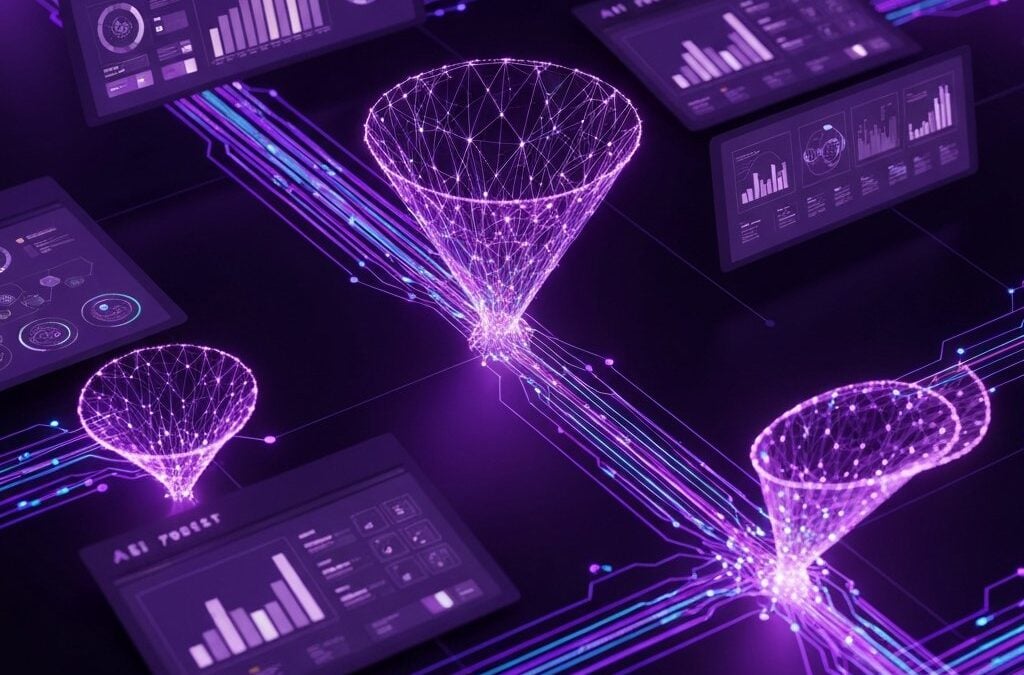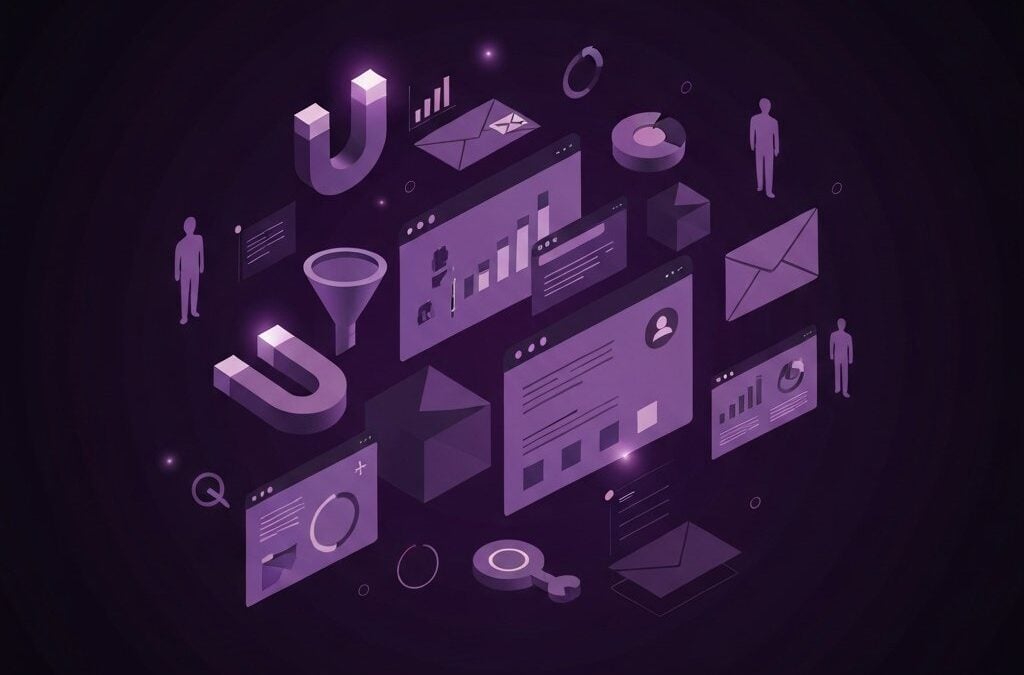Why real-time AI monitoring matters now
Real-time AI monitoring turns noise into opportunity. Brands and teams used to wait for weekly reports to spot a pattern. Now trends move fast. Real-time monitoring finds signals as they form, not after the party is over. This matters because competitive advantage often comes from being first. When a niche topic spikes, early movers capture attention, traffic, and market share. Real-time systems are not just about speed. They add context, reduce false positives, and let teams act with confidence. For example, Confluent’s Streaming Agents marry streaming data with agentic AI so systems can monitor, reason, and act on live signals. That kind of always-on system prevents teams from flying blind and reduces costly delays.
Core components of a real-time AI monitoring stack
A reliable stack has four parts: ingestion, enrichment, reasoning, and action. Ingestion captures live feeds like social, telemetry, news, and IoT. Enrichment layers signals with context such as embeddings, metadata, and historical baselines. Reasoning is where models analyze patterns, classify intent, and surface anomalies. Action routes outcomes to humans or systems via alerts, API calls, or automated workflows. Tools vary by focus. Amazon Bedrock Agents, for instance, enable multimodal scene understanding and graduated escalation for video monitoring. Meanwhile, Confluent’s Streaming Agents embed agent logic inside stream processing pipelines to keep models honest with current context. Both approaches illustrate a vital point: fresh context is the difference between noise and an exclusive trend.
A short checklist to get started today
- Map your signal sources. Include social, news, telemetry, and platform logs.
- Set baselines and slack thresholds to avoid alert fatigue.
- Choose models that accept contextual inputs, like embeddings or time windows.
- Build graduated responses to triage events efficiently.
- Log every decision to support audits and iterative improvement.
How organizations turn signals into exclusive trends
Spotting a trend takes more than volume spikes. You need three layers of evidence: trajectory, novelty, and influence. Trajectory asks whether mentions rise faster than baseline. Novelty assesses whether the topic is genuinely new to your audience. Influence weighs who is talking and how that conversation spreads. Real-time AI monitoring fuses these metrics. For instance, Eletrobras used C3 AI Grid Intelligence to reduce fault response time under ten seconds by correlating alarms with equipment context. That same principle applies to market trends: correlate mentions with source authority, and you get signals you can trust. As Hootsuite’s guide to social listening points out, listening is about context, not just counts. A spike without influence or novelty is often a short-lived blip, not an exclusive trend.
Practical techniques that work
Use rolling windows and pseudo-temporal inputs to simulate trend formation when full histories are not available. That technique proved useful in agriculture phenotyping research, where a 3D deep learning framework detected tiny new plant organs from limited time-series data. The researchers created pseudo-temporal inputs to run single-stage inferences while preserving sensitivity. Apply the same trick to social signals: when a new conversation appears, synthesize a short temporal context from related terms, embeddings, and recent activity across channels. Next, fuse text, images, and metadata with vector search to improve novelty detection. Finally, run influence scoring to prioritize signals from trusted nodes. These tactics compress the discovery timeline and increase precision.
Quote to remember
“Agents are only as powerful as the tools and data they can access,” said Shaun Clowes, emphasizing that real-time context is essential for agentic AI to be effective. When your monitoring system gives agents stale data, you get stale insights.
Comparison table — real-time AI monitoring options
| Capability / Approach | Best for | Latency | Contextual reasoning | Scalability | Notable example |
|---|---|---|---|---|---|
| Streaming + Agentic AI | Enterprise automation, pricing, ops | Sub-second to seconds | High — agents use fresh context and tools | Very high with Kafka/Flink | Confluent Streaming Agents (integrates LLMs with streams) |
| Foundation Models + Agents | Multimodal, natural language queries | Seconds to minutes | Very high — natural reasoning, memory | High with cloud infra | Amazon Bedrock Agents (video + memory) |
| Proprietary Enterprise AI | Industry-specific monitoring | Seconds to minutes | Medium — tuned models and rules | High, vendor-managed | C3 AI Grid Intelligence (real-time grid fault detection) |
| Domain-focused Deep Learning | High-sensitivity detection in narrow fields | Seconds to minutes | Low to medium — specialized features | Medium, depends on data | 3D-NOD (plant organ detection from point clouds) |
Table insight: Choose the approach that matches your latency and context needs. Streaming agents are ideal when action must be immediate and data volumes are massive. Foundation model agents suit multimodal reasoning. Domain models win when ultra-high sensitivity is required.
Governance, ethics, and false alarm control
Real-time systems can produce too many alerts. To avoid alert fatigue, use graduated escalation: log routine events, notify humans for ambiguous events, and trigger automated responses only for critical cases. Maintain transparent decision logs. This aids audits and model retraining. Also, be mindful of privacy and platform policy limits. Changes to APIs or data access can break an entire pipeline; redundancy matters. The RSIS analysis on social listening warns that dependence on single APIs is risky. Use multiple sources and fallback feeds to sustain coverage when platforms change rules.
Roadmap to uncover exclusive trends in 90 days
Week 1 to 2: Inventory data sources and set baselines.
Week 3 to 4: Implement ingestion and enrichment layers. Start with simple thresholds.
Week 5 to 8: Integrate a reasoning layer. Test lightweight agents or model endpoints.
Week 9 to 12: Build action workflows and escalation paths. Optimize models with human feedback loops.
Continuously: Audit signals, retrain models, and expand sources. This plan is pragmatic. It gets you from zero to working trend discovery quickly while allowing iteration.
Tools and resources worth bookmarking
- Confluent’s Streaming Agents for integrating agents with event streams.
- Amazon Bedrock Agents for multimodal reasoning and agent-driven escalation.
- Hootsuite’s social listening guide for practical listening strategy tips.
These resources will help you design a resilient stack that catches early, exclusive trends and turns them into advantage.
So, what’s the takeaway?
Real-time AI monitoring is a powerful way to uncover exclusive trends before they become mainstream. Use streaming agents for low-latency action, foundation-model agents for deep context, and domain models where sensitivity matters. Build redundancy, log decisions, and design graduated escalation to keep false alarms under control. Start small, iterate fast, and you will not only spot trends early. You will also be the one who sets them.
Quote to end on: “Spot trending topics and stay ahead of competitors,” advises Hootsuite, because listening in real time is your competitive edge.
Related link: Explore more case studies and tools on our site at https://blog.promarkia.com/



